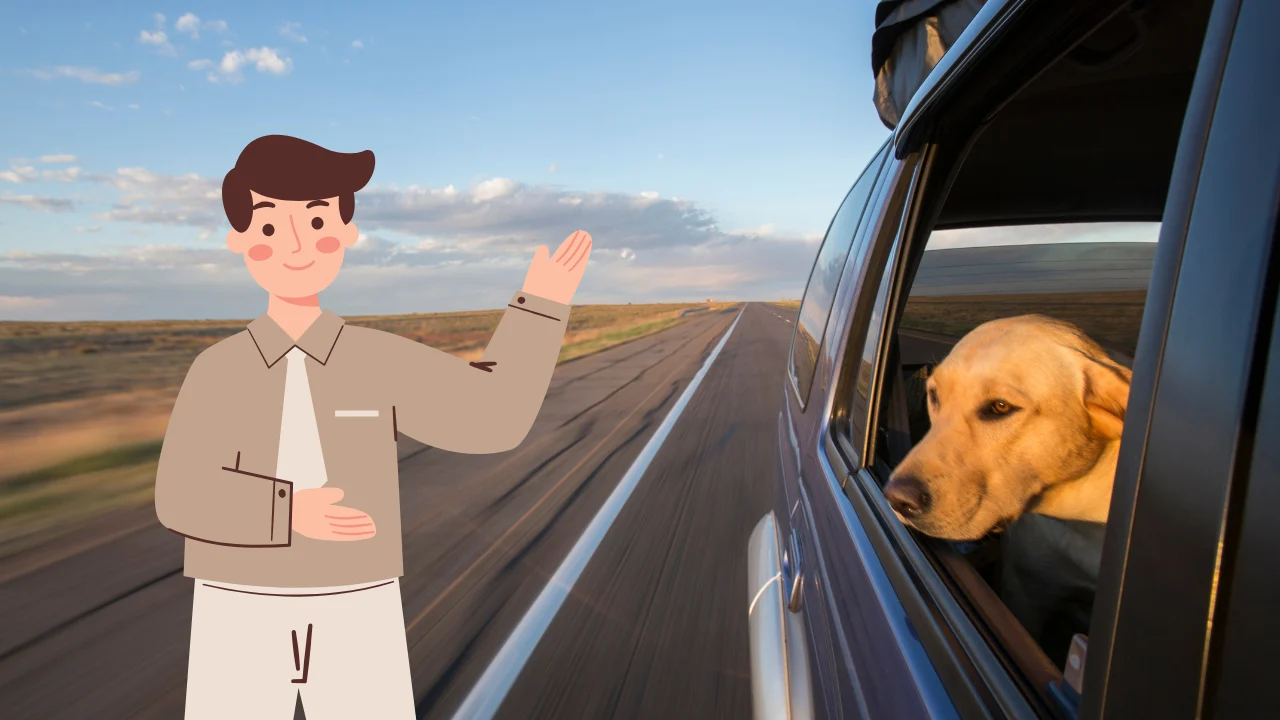When I first wondered how do you transport a dog in a car, I quickly realized it’s not just about comfort but also safety. Around 60% of pet owners admit that they let their dogs roam freely during car rides. But this can lead to serious distractions and accidents, which is why restraining your dog is essential. Check out expert advice on how to calm dogs in the car to reduce anxiety during travel.
As a pet lover, I always prioritize my dog’s safety when traveling. Studies show that unrestrained dogs are three times more likely to cause accidents. Ensuring they’re properly secured is crucial for both their well-being and mine.
Navigation Menu
Quick Look
To transport a dog in a car, secure them in a crate or use a pet seatbelt harness. This ensures their safety and prevents distractions while driving. Make sure the car is comfortable, with regular breaks for long trips.
Can I let my dog sit in the front seat during car travel?
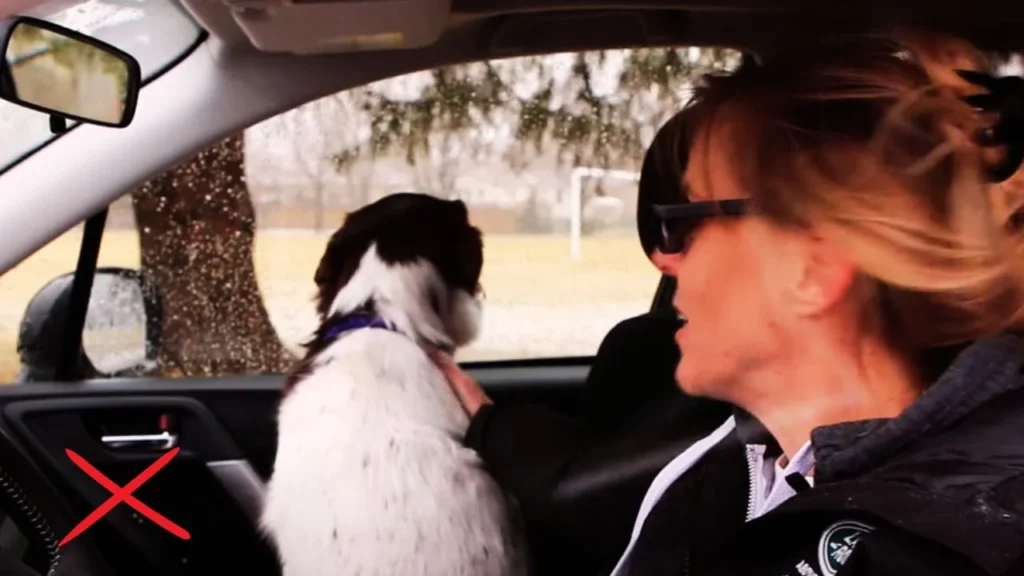
It’s not recommended to let your dog sit in the front seat during car travel. Airbags can pose a significant risk to pets, especially in the event of an accident. In addition, an unrestrained dog can distract the driver, increasing the chances of an accident.
For safety, it’s best to keep your dog in the back seat, secured in a crate or with a seatbelt harness. This will prevent your dog from being thrown around in case of sudden stops or collisions and ensure both your pet’s safety and the safety of everyone in the car. Get tips on how to keep a car cool for dogs during warm weather.
Legal Considerations
When it comes to transporting your dog in a car, it’s not just about comfort and safety—it’s also about following the law. In some places, there are laws that require you to restrain your dog while traveling. For example, in the UK, unrestrained pets can lead to fines of up to £5,000 under road safety regulations.
In the U.S., some states have specific rules about how pets should be transported. In New Jersey, for instance, it’s required that dogs be secured in the vehicle, or you could face fines of $1,000. Ensuring you’re following these rules not only keeps your dog safe but also helps you avoid costly penalties.
So, check your local laws before hitting the road. Knowing the requirements in your area can save you from unwanted fines. A little research today ensures a much smoother journey tomorrow! Discover why you should never leave a dog in a hot car and the dangers involved.
How Do You Transport a Dog in a Car? 3 Best Restraints
When traveling with your dog in the car, safety is crucial. I’ve learned from experience that keeping my dog restrained not only prevents distractions while driving but also ensures their safety in the event of a sudden stop or accident. There are several effective ways to secure your dog, each offering different levels of protection based on your needs.
Dog Crates and Carriers: Ultimate Protection for Your Dog
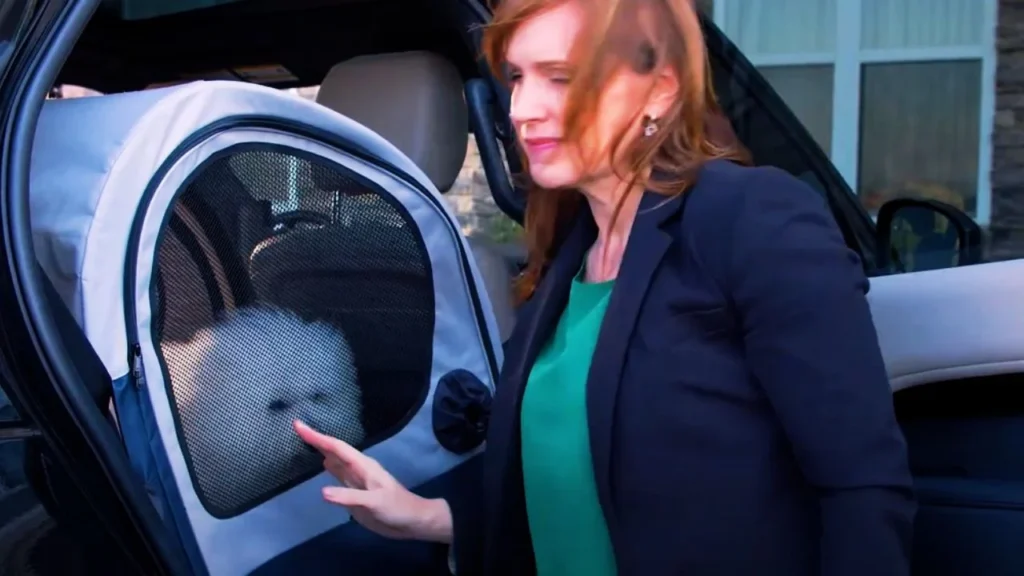
Using a sturdy crate or carrier is one of the safest methods to transport your dog. When I first used a crate for my dog, I was amazed at how much calmer he was during travel. I prefer using high-quality, crash-tested crates. These crate offers solid protection in the case of a sudden stop or collision. It provides my dog with a personal space, reducing anxiety and keeping him secure in the car.
For smaller dogs, the Sleepypod Atom is a great option. It’s compact, portable, and meets safety standards for crash protection. Its soft interior makes the ride comfortable, while the durable outer shell ensures safety on the road. The Sleepypod Atom is a perfect choice for pet owners who want both safety and comfort for their pets during travel.
Dog Seat Belts and Harnesses: A Secure Alternative
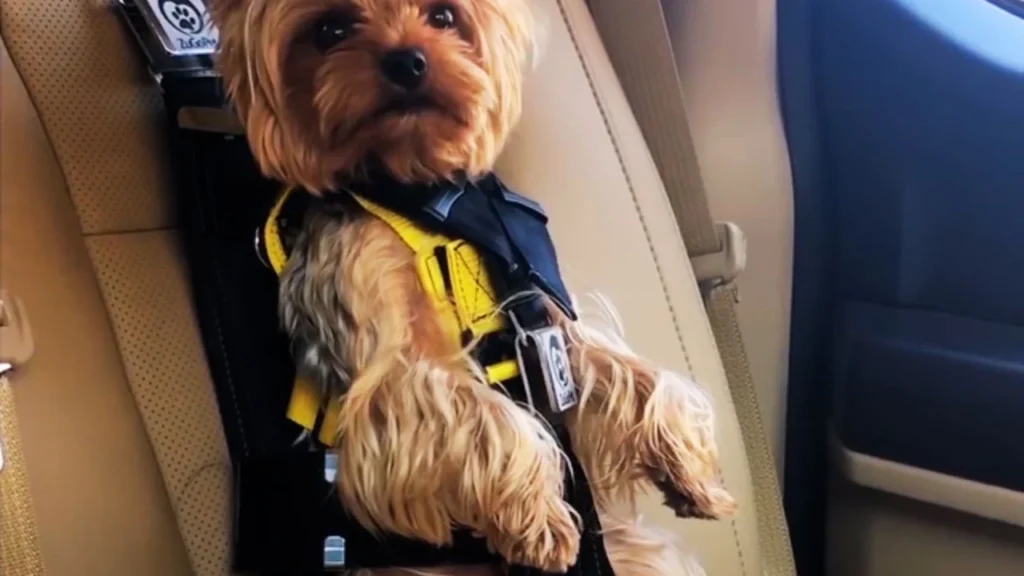
If you prefer not to use a crate, dog seat belts and harnesses are excellent alternatives. I personally use the Sleepypod ClickIt Sport harness, which is crash-tested and designed specifically for car safety.
It’s one of the few harnesses that has passed safety tests for car travel, making it a reliable choice for keeping my dog secure in the seat. This harness offers a comfortable fit while ensuring my dog’s safety, significantly reducing the risk of injury during an accident.
Another option worth considering is a versatile dog carrier and seatbelt harness that attaches directly to the seatbelt, providing additional security while allowing your dog to sit comfortably in their own space. Both of these harnesses are excellent for preventing your dog from jumping around the car or distracting the driver. Find out what to do if your dog got hit by car, can’t afford vet in our helpful guide.
Cargo Barriers: Ideal for SUV and Hatchback Owners
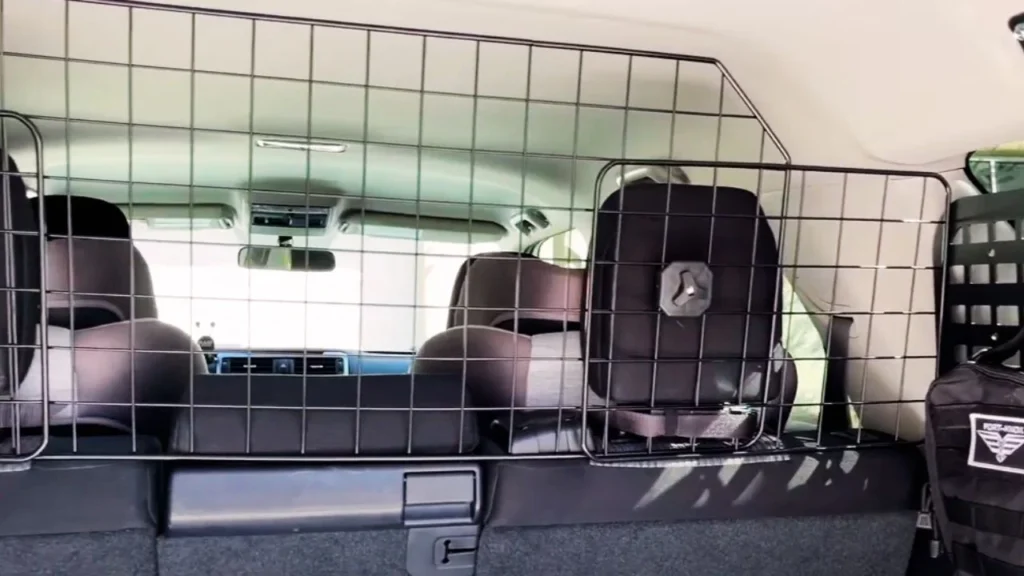
For those of us who drive SUVs or hatchbacks, cargo barriers can be a game-changer. These barriers keep your dog in the backseat area, preventing them from climbing into the front or distracting the driver.
Installing a cargo barrier not only ensures your dog’s safety but also prevents them from interfering with your driving. This setup allows me to focus on the road while keeping my dog comfortable and secure.
Preparing for the Journey
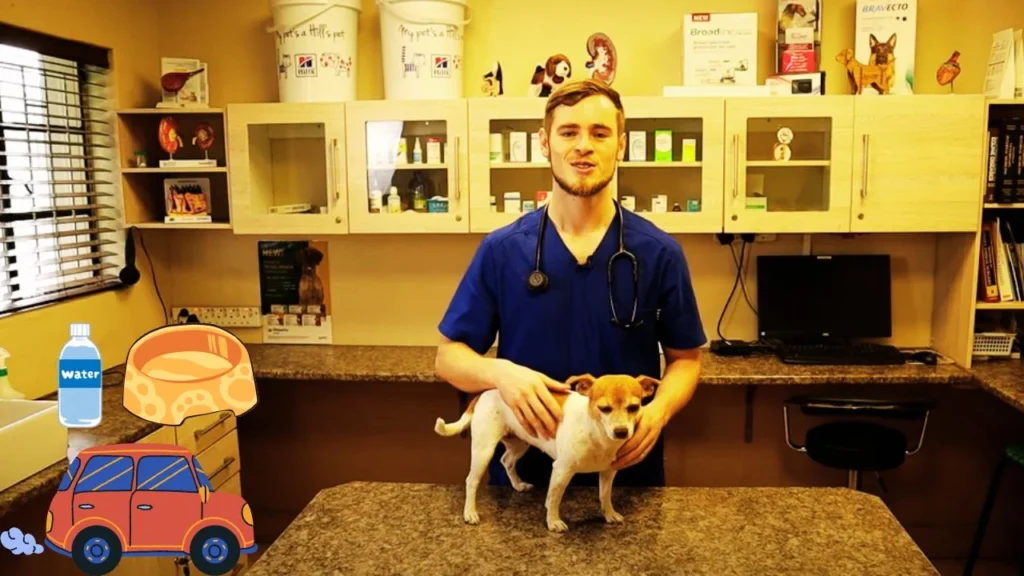
Before hitting the road, it’s essential to take a few steps to ensure your dog’s safety and comfort. I always schedule a vet check-up about a week before the trip to ensure my dog is fit for travel. If your dog’s health is in good shape, the journey will be much smoother, with fewer risks involved.
Identification is also crucial when you’re traveling with a pet. I make sure my dog’s collar has an up-to-date ID tag, and I always double-check the microchip information. It’s estimated that 1 in 3 pets will go missing at some point in their life, so this is a must.
Additionally, hydration is key for both you and your dog. I pack a portable water bowl and keep a water bottle handy. Just like us, dogs can get dehydrated after a few hours of travel, so offering water every 2-3 hours is essential to keep them comfortable. Learn how to keep my dog calm in car ride for a stress-free trip.
During the Trip
Traveling with my dog can be a fun adventure, but it’s important to ensure their comfort and safety during the journey. Here are a few tips I follow to make sure both of us have a smooth ride.
1. Maintaining a Comfortable Temperature
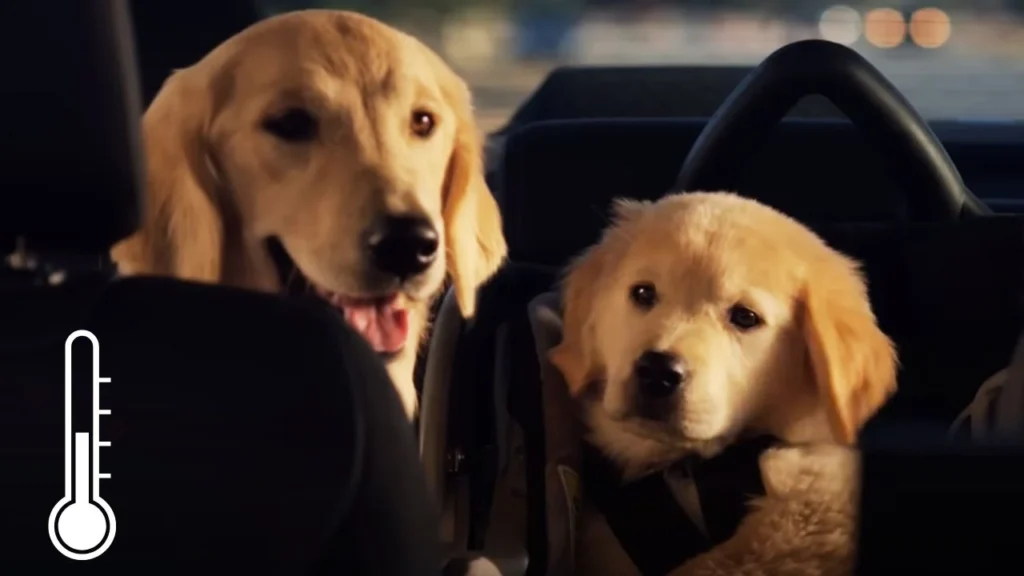
When I’m traveling with my dog, I always make sure the car environment is comfortable for them. Keeping the temperature between 65°F and 75°F (18°C to 24°C) helps avoid any discomfort, especially on longer trips. A comfortable ride makes the journey easier for both of us!
2. Smooth Driving for Less Stress
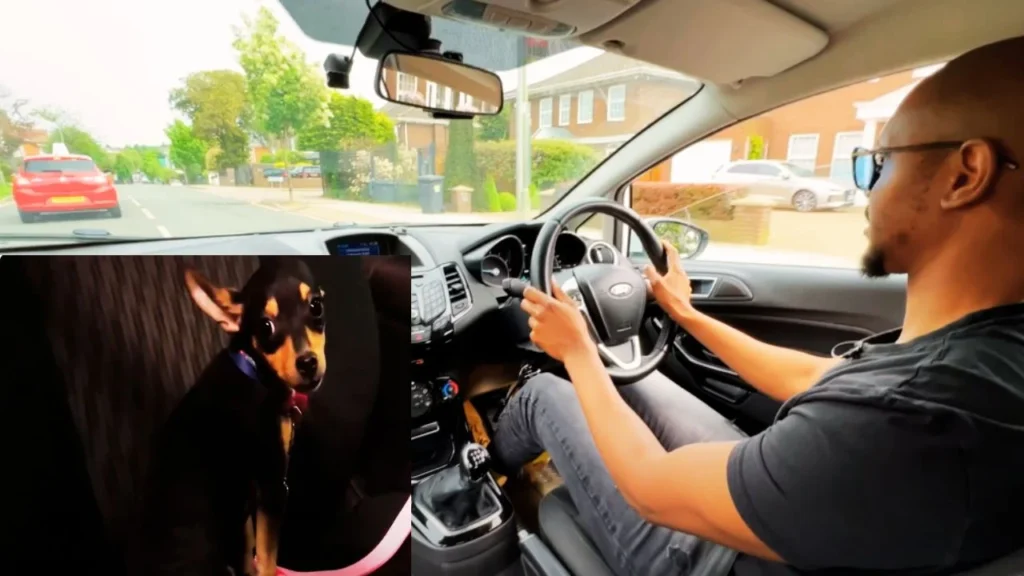
I also try to avoid sudden stops or sharp turns that could make my dog feel uneasy. The smoother the drive, the less stressed they will be. Regular breaks, about every 2-3 hours, are key for both of us to stretch and refresh during the trip.
3. Keeping My Dog Hydrated
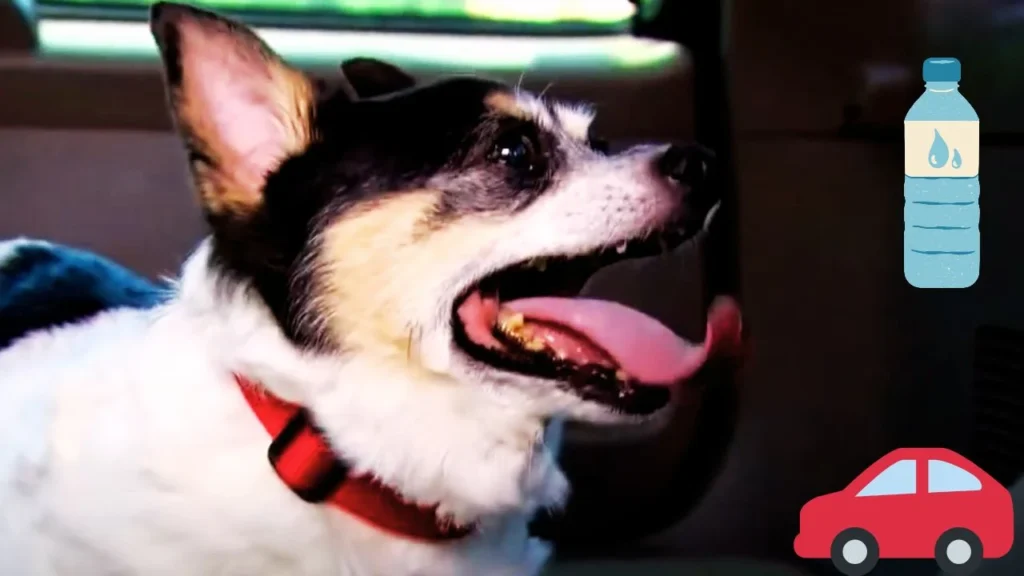
Another important aspect is hydration. I make sure to offer my dog water every hour, especially on hot days. This helps keep them hydrated and prevents dehydration, which can lead to discomfort and health issues on long drives
Post-Trip Care
After a long car ride, it’s important to let your dog get comfortable and settle into their new environment. I always make sure to give my dog some time to adjust after the trip. This helps reduce stress and makes the transition smoother.
I also monitor my dog closely for signs of discomfort or stress. Dogs may experience motion sickness, especially during long trips, so it’s vital to keep an eye out. Around 10-15% of dogs suffer from travel-related anxiety or discomfort, so it’s worth being extra careful.
If your dog seems uneasy after the journey, I recommend offering some water and light snacks. This helps them rehydrate and feel more at ease. As a pet owner, knowing when to provide comfort can really make a difference in how your dog recovers.
Final Words
Transporting a dog in a car can be simple and safe if done correctly. I always make sure to secure my dog in a crate or with a harness for added safety. Studies show that dogs in restraints are 65% less likely to be injured in car accidents.
By following these tips, you’ll not only protect your dog but also ensure a more enjoyable trip. So, next time you ask yourself, “how do you transport a dog in a car?” remember safety and comfort are key.
FAQs
How can I keep my dog calm during car travel?
To keep your dog calm, try giving them a familiar blanket or toy. Ensure regular breaks, provide water, and avoid feeding them a large meal before traveling. You can also use calming products like pheromone sprays or consult a vet for anti-anxiety solutions.
What should I do if my dog gets anxious or stressed during long car trips?
If your dog gets anxious, try calming techniques like playing soothing music or using a dog-specific anxiety vest. Ensure they’re comfortable, take frequent breaks, and avoid sudden movements. In severe cases, consult a vet for anxiety medications or behavioral strategies tailored to your dog’s needs.

